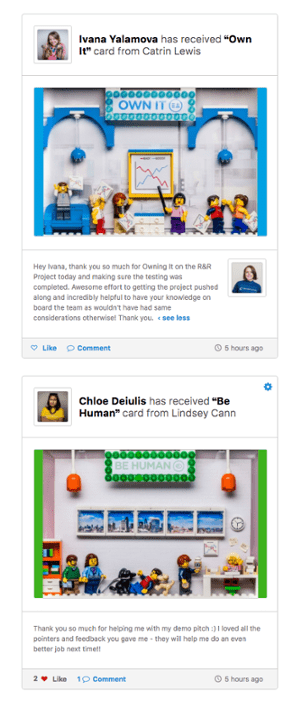
6 min read
It doesn’t matter whether you’re the CEO or the newest face in the office, we’re all human and there are times when keeping up your high standards can be a struggle.
Every employee experiences a period of time when they miss deadlines, lose focus on their work or, for some reason, don’t seem to care. I know it can really ramp up when there’s bustling activities outdoors that’s catching your eye. That’s why it’s important to move past distractions and focus on new ways to help your people reach their best potential on a daily basis.
Keeping people focused, engaged and eager to work is vital to running a smooth operation and growing your business.
Engaged employees make better decisions, innovate more and care how the business operates. A lack of motivation can derail your engagement efforts in a big way.
As a leader, your job is to provide opportunities to motivate your staff. But just like engagement, drumming up motivation can’t be forced. Instead of taking charge with “militant motivation,” I suggest that the route to reducing workplace fatigue isn’t in regulations, but instead it’s about empowering your employees to be their greatest selves.
Let’s break this down and learn how put in place employee motivation strategies from the top-down:
Build gratitude
One of the strongest motivators is being recognized. Creating a culture of continuous recognition among employees is an important building block on the Engagement Bridge™ 10-step strategic model, but it’s also a way to show your colleagues and direct reports how much their hard (sometimes very hard) work is appreciated by others.
Regularly sending eCards via our peer-to-peer employee recognition program is a simple step to say “thank you” for a job well done, or give a bit of extra encouragement to employees when I know they’re having tough weeks. Our WOW wall helps create these ongoing moments as social recognition takes hold with extra “likes” and comments from coworkers. Here’s a look at some of our recent shoutouts:

Along with technology, verbal praise goes a long way. A recent study we conducted showed that 54% of employees feel their boss could do more to appreciate them. If you’re feeling like your staff is demotivated, holding a staff meeting to celebrate those WOW moments and acknowledge the tough ones can make a big difference.
Learn more ways to build recognition moments with our template »
Build inspiration
Inspiration isn’t manufactured, it’s earned. By creating a purpose, vision and mission that resonates with your people and the greater population, your employees will be more driven to do all that they can to ensure the organization’s success. Our mission, “let’s make the world a better place to work” doesn’t mean, “work hard, all day every day, and only think about work.” It means that we expect our people to live our values to Work Hard and Push the Boundaries, but also take the time for themselves with perks like flexible working or taking personal time to come back to work refreshed and motivated.
Sometimes your employees can get so focused on the 'now,' that they forget about the, 'why.'
Lack of motivation can be more frequent around busy times like right before Christmas, or slower times during the summer when every other week your colleague is on a holiday break. Remind your employees of that “why” by making your purpose known widely and frequently on your social channels, on your company website and within everyday conversation. How does their work connect to the bigger, far-reaching goals?
Another way to get your employees to think bigger is to introduce an employee perk that lets them get outside of the confines of the office. Last year we introduced volunteering days, where we offer three paid days to any employee who wants to volunteer. (Here’s one tale of how our photographer Chris Parkes used his three days to volunteer, and then some.)

Build bridges
I spend the first half hour of my day sitting out in the open to make myself available for anyone who wants to share a cup of coffee with me and talk about whatever they need, whether that’s airing grievances, getting my opinion on how to communicate a tough subject or telling me about their weekend. Visibility and accessibility are key to motivation — when employees feel that their leadership team is behind closed doors in the midst of a chaotic (or subdued) work environment, they can’t help but wonder what’s going on, and if they’re being shut out. It’s critical to be honest and open with your time, and use that to build those bridges between leadership and the rest of the company.
To combat that worrisome feeling of being left in the dark, we follow one rule from our very first HR director:
Be as honest with your people as you can, as soon as you can.
Use a centralized internal communications system to communicate what you can, when you can. Showcase moments that matter in your organization, tell employees what their hard working is going towards and give them the tools to Speak Up. Make it a goal to ask someone new every day how they’re feeling, and what their current challenges are.
It may not be possible to do all of these things, but starting to build that atmosphere of success is the most important step. Remember that part of your job is to motivate, but the bigger part of your job is to keep that motivation constant.
Tell me, what demotivates your employees, and what have you done to right the ship?

 Robert Hicks
Robert Hicks
